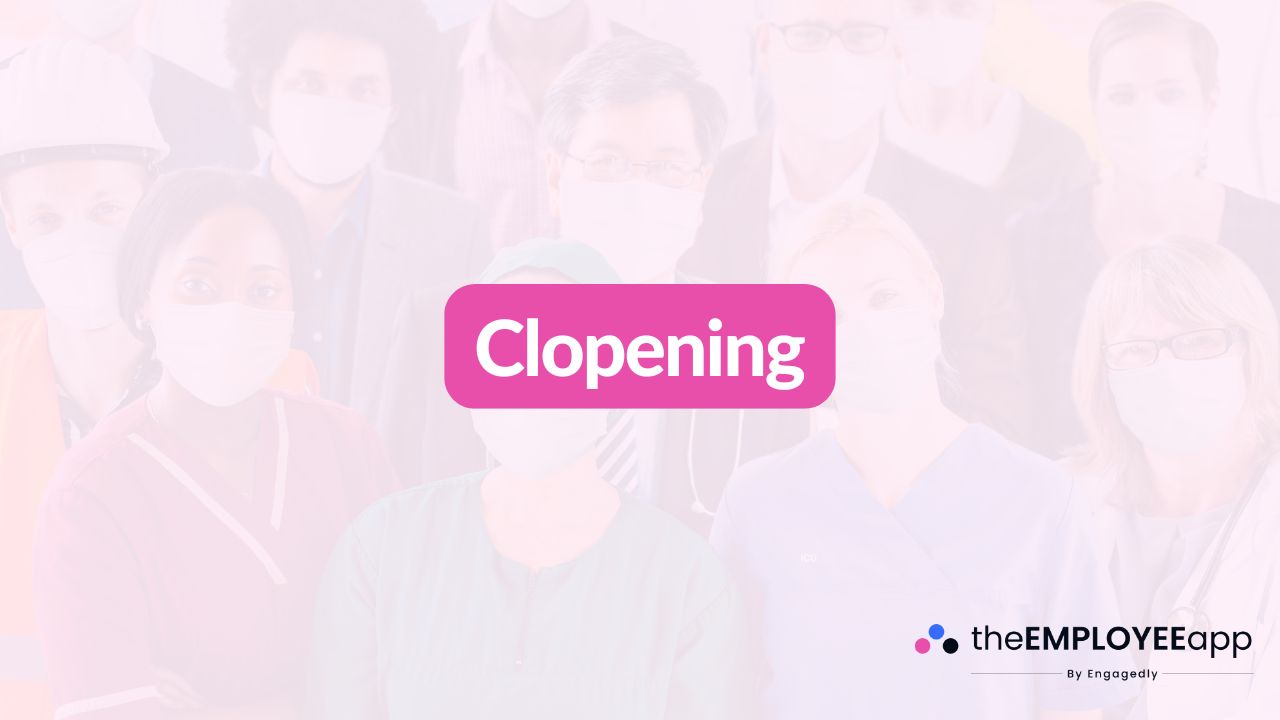
Introduction
Clopening, short for “close-to-open,” is a scheduling practice where an employee works a late-night closing shift and then returns for an early-morning opening shift with little time in between. While common in retail, food service, hospitality, and other shift-based industries, clopening has gained attention because of its negative impact on employees. It highlights the importance of smarter workforce scheduling strategies that balance operational needs with employee well-being.
What Is a Clopening Shift?
A clopening shift occurs when the same worker is responsible for closing a location late at night and then returning to open it early the next day. For example, an employee may finish a restaurant shift at 11:30 p.m. and be required back at 6:00 a.m. to prepare for opening. While this arrangement can help employers fill coverage gaps, it often leaves employees with very little rest time between shifts.
Why Employers Use Clopening
Clopening shifts are often the result of last-minute scheduling needs or limited staffing. In industries with high turnover and unpredictable demand, employers may rely on clopening to ensure coverage without hiring additional staff. It can also happen unintentionally when managers use manual scheduling systems and fail to notice conflicts. While it may solve short-term staffing issues, clopening has long-term consequences for both employees and organizations.
Challenges and Risks of Clopening
The biggest drawback of clopening is the strain it places on employees. With only a few hours between shifts, workers often struggle to get adequate rest. This leads to fatigue, stress, and reduced productivity. Over time, repeated clopening shifts can contribute to burnout, absenteeism, and higher turnover rates. From a customer perspective, fatigued employees may also provide lower-quality service, affecting the overall brand experience.
Clopening can also create compliance issues. In some regions, labor laws require a minimum rest period between shifts or mandate additional pay for clopening situations. Organizations that fail to comply risk penalties and reputational damage. Beyond compliance, clopening undermines employee morale, as workers often feel undervalued when forced into schedules that disregard their need for rest and personal time.
Impact on Employees
For frontline employees, clopening directly affects work-life balance. Limited rest impacts physical health, making workers more prone to illness or injury. Mental health can also suffer, as irregular sleep schedules contribute to stress and exhaustion. Employees who consistently experience clopening shifts may struggle to maintain personal commitments such as childcare, transportation, or education. Ultimately, these challenges make clopening one of the least desirable scheduling practices in shift-based industries.
How to Avoid Clopening
The best way to avoid clopening is by adopting smarter scheduling practices. Managers should ensure that schedules allow for adequate rest between shifts, ideally at least 8 to 10 hours. Rotating staff fairly and avoiding repeat clopening assignments helps distribute responsibility more evenly. Using scheduling software can significantly reduce errors and prevent unintentional clopening. These tools highlight conflicts, allow employees to set availability, and enable managers to create more balanced schedules.
Clear communication is also important. Allowing employees to request schedule preferences or swap shifts creates more flexibility and reduces the likelihood of clopening. Providing advance notice of schedules helps workers prepare for shifts and manage personal responsibilities. By listening to employee feedback and making adjustments, organizations can foster a healthier work environment while still meeting staffing needs.
Benefits of Eliminating Clopening
Reducing or eliminating clopening creates multiple benefits. Employees enjoy better work-life balance, improved morale, and higher energy levels, which translate into better customer service. Employers benefit from reduced turnover, fewer scheduling conflicts, and stronger employee engagement. Creating predictable and fair schedules also enhances the employer brand, making it easier to attract and retain talent.
The Future of Scheduling Without Clopening
Modern workforce scheduling is moving toward employee-centered approaches that value flexibility, predictability, and fairness. As more organizations embrace digital scheduling platforms, the likelihood of clopening is decreasing. Predictive analytics can forecast demand more accurately, ensuring staffing needs are met without overburdening employees. In the long run, eliminating clopening will not only support healthier employees but also create more resilient and efficient organizations.
Conclusion
Clopening, or the practice of scheduling employees for back-to-back closing and opening shifts, has become a symbol of poor workforce scheduling. While it may temporarily fill staffing gaps, its long-term effects on employee well-being and organizational performance outweigh the short-term convenience. By leveraging modern scheduling tools, promoting fairness, and respecting employee needs, organizations can move away from clopening and toward a more sustainable workforce management strategy.
